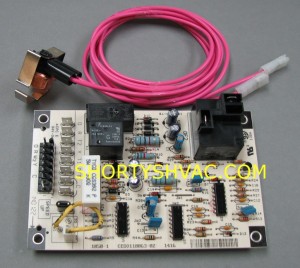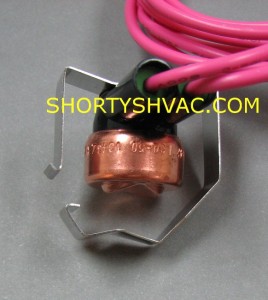Refrigerant has been called Freon for years because DuPont started manufacturing it under the brand Freon. The correct term is refrigerant. There are several different types of refrigerant and each has a specific pressure temperature chart. The different types of refrigerants boil at different temperature points and are used for different applications. Refrigerant pressures are measured in PSIG which is pounds per square inch gauge. This means that 0 PSIG is actual atmospheric pressure at sea level.
A property of refrigerant that makes it useful to cool a house or building is the ability to read the pressure of the refrigerant and know it’s temperature. Refrigerants will change from a liquid state to a vapor state at a very low temperature. If you control the pressure of the refrigerant you can control the temperature it changes state at.
For example, a drum of liquid R-22 at 80 degrees will change from a liquid to a gas and the pressure will increase as the gas expands. When the pressure reaches around 143 lbs, the boiling will stabilize and as long as the temperature remains constant the pressure will remain constant.
If the drum is moved to a cooler area the pressure will be affected. If the new area is 60 degrees the refrigerant gas will condense back to a liquid and the pressure will drop. When the pressure reaches around 102 lbs the condensing of the gas will stabilize.
If you connected a regulator to the R-22 refrigerant drum and allowed liquid refrigerant to pass through it into a coil and set the regulator at 58 lbs the coil temperature would be controlled to 32 degrees until you ran out of refrigerant. If you blew 75 degree air across the coil some heat in the air would be absorbed by the refrigerant and the air temperature would drop.
If we have a way to collect the refrigerant and put it back in the drum we would have a refrigeration system. This is accomplished with a compressor. When the refrigerant leaves the coil we were discussing it travels through a line as a low pressure vapor into a compressor that compresses the refrigerant into a high pressure vapor. When it is compressed the temperature will be much higher than the outdoor air temperature.
It then travels to a condenser coil as a high pressure superheated gas where it will be cooled by blowing ambient air across a coil. As the refrigerant gives up heat into the ambient air it will cool and condense to a high pressure liquid. This high pressure liquid will be metered through a metering device (much like the regulator we discussed earlier). As it passes through the metering device it will change to a low pressure liquid.
This drop in pressure will cause a drop in temperature of the liquid refrigerant. The low pressure liquid will travel to an evaporator coil and the temperature of the refrigerant will be less than the temperature of the air being blown across the coil. The refrigerant will absorb heat from the air causing the air temperature to drop and the refrigerant to boil and change to a low pressure vapor.
The low pressure vapor will become superheated and return to the compressor and the process will begin again.



